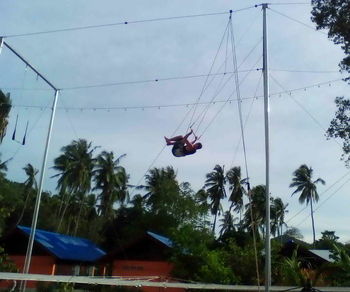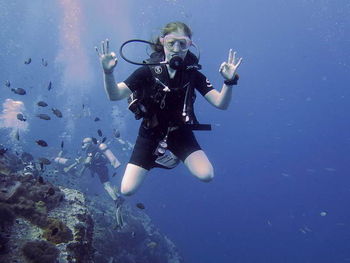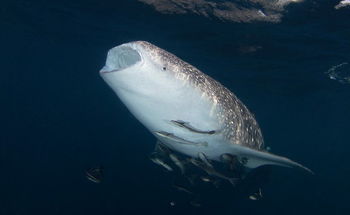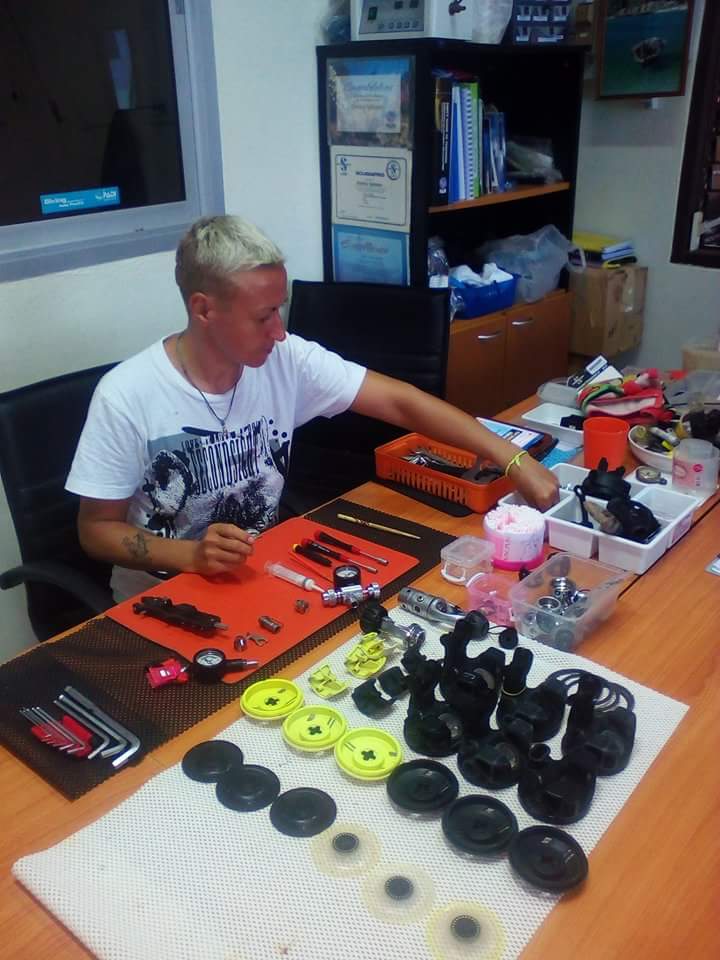- Home
- News
Ask dive guide for assistance
When you are on a dive boat, let your dive guide know you would like to do a weight check before to go underwater. In most cases, any dive professional will be glad to help you get in the water before the dive, and give or take extra weights if you ask for.
Do a weight check
Gear up and enter the water wearing your usual amount of weight, with your BCD inflated. Float upright on the surface with your head above the water, and release the air from your BC as you take a deep breath from your regulator. If you sink quickly below the surface, you took too much weights. If your head stays above water, you took not enough weights. If you float at eye level, you are just right.
Adjust weight
Inflate your BCD, add or remove weight, then complete the weight check again. Continue these steps until you float at eye level with an empty BC and a full breath of air in your lungs. Pay attention to your breath: you should sink slowly when you exhale.
Go down
When perfectly weighted, it is normal for divers to need a little extra help descending through the first 2–3 meters of water. You can use buoy line to push yourself down those first 2–3 meters or take one extra weight from your dive guide, then give it back when don’t need it anymore.
Control buoyancy by breathing
On the bottom, you should need very little air in your BC to stay neutrally buoyant. In fact, trained divers can control their buoyancy almost entirely through their breathing — inhaling slowly to hover in the water column, and exhaling slowly to descend easily down.
To master your buoyancy control we recommend to take PADI Peak Performance Buoyancy Specialty Course.
Snorkeling.
If you are not ready to go diving but still want to see the wonders of the sea then blue shallow waters of Koh Tao' beautiful beaches are good place to start. You may be a lucky enough to swim with turtle or juvenile black-tip reef sharks as well as few different types of colorful reef fish.
Kayaking.
Goes perfectly with snorkeling as you can stop whenever you want, with kayak you can get to some places not accessible by boat or by foot. The south of the island is best as there are a lot of interesting places to see all nearby, so you don’t have to go too far.
Monitor the wind and wave conditions before to go out, make sure you take sunscreen and a lot of drinking water.
Rock Climbing.
Granite rocks are everywhere on Koh Tao, so there are some great rock climbing routes to improve your technical climbing skills. If you have never tried climbing before, take the Discover Rock Climbing half day experience.
Hiking.
There are plenty of hiking trails around the island such as Sairee — Tanote, Laem Thian — Mao Bay, Mae Haad — Sai Nuan — Chalok. It is recommended to do any hiking either in the early morning before it gets too hot, or later in the afternoon. While the tracks are generally safe, it is a good idea to take a mobile phone and a first aid kit with you just in case. And lots of water.
View Points.
Koh Tao has many viewpoints, some you can drive to, some others you can reach on your foot, most have bar or restaurant, so you can enjoy breathtaking view sipping fruit shake.

Flying Trapeze.
This is an absolutely unforgettable experience. You have to try it to believe it! Good Time Adventures offer beginners classes to advanced classes.
Yoga.
Yoga is practiced in a few locations on Koh Tao, and is an ideal way to learn to relax, find focus and tone the body. The three most popular yoga schools are Shambhala, Baan Talay, Ocean Sound. There are many styles of yoga and quite a few forms are available here.
SPA and Massage.
Koh Tao has lots to offer when it comes to beauty treatment of various kinds, from SPA, massage to pedicure, there are many available services to choose from.
Traditional Thai massage has been practiced and taught for centuries and it seems most Thais know at least a little of this ancient art. Also available oil massage, aromatherapy massage with pure essential oils, massage with aloe vera could be very helpful after sunbathing.
In the evening you can finally relax and enjoy your fresh seafood BBQ in one of the beach!

Chumphon Pinnacle is the most impressive dive site around Koh Tao and the second only to Sail Rock as the best site in the Gulf of Thailand.
Ranging from the depth of 14m to 45m, a site is a group of few massive granite pinnacles running north to south. The top of the main huge pinnacle is carpeted in Magnificent anemones, full of Pink Anemonefish. Other smaller pinnacles surround the main pinnacle. The rocks form various plateaus and ledges covered in hard and soft coral, sea whips, gorgonian sea fans and barrel sponges. Crabs, shrimps, White-eyed moray eels hide in the numeral crevices.

- It’s a shark, not a whale — whale sharks are fish and breath through their gills.
- They are named Whale Shark because of their size, and the fact they are filter feeders, like whales. However, they have cartilage, instead of bone making them a true shark.
- Whale shark’s display a distinctive pattern of white spots, on a dark gray background with a white underbelly. The pattern is unique to each individual.

Since your Open Water Diver Course you know that it is vital to service your diving equipment regularly and in time.
In Scuba Birds we consider the safety as the first priority that’s why we continually monitor our equipment: BCDs, wetsuits, fins, masks throughout the year and service our regulators every 3–4 months. Our scuba aluminum tanks are visually serviced once a year and hydrostatically tested every five years to Thailand Standards by highly trained specialists.



